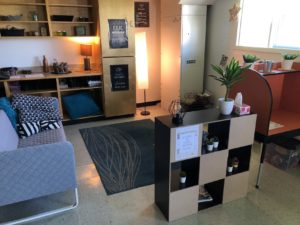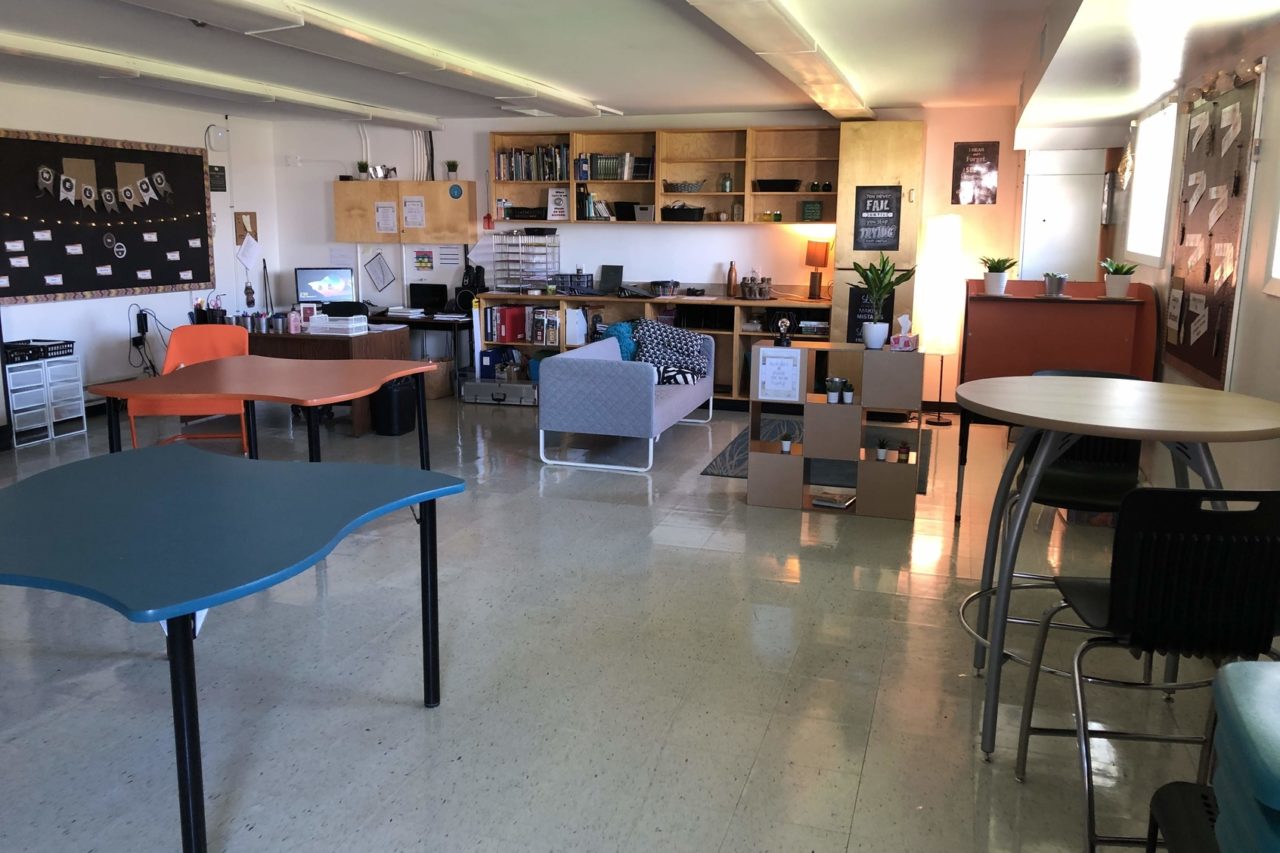Maybe the title seems a little obvious but having been a teacher for many years and also having been in numerous classroom spaces, both indoors and outside, I’m not convinced the spaces we teach in are always created with the learners in mind… “for learners and learning”. If you are feeling cynical, you could say that attending to the physical space is just “shuffling the deck chairs” and calling it a learning environment. But, if the shuffling is thoughtful and intentional and gives the new passengers a different perspective and enjoyment of the journey, why not use it as a way to inquiry into how learning and learners are affected by space. And better yet, because our students are not just passengers in the learning (I hope) but pilots as well, giving them a voice into the arrangement of the space can build trust and the foundation for a gradual release of responsibility for their own learning.
 The pictures I captured that are connected to this article are from the grade 7 and 8 classroom at Bothwell School. When I asked the teacher, Lory Muntain, about the space she had created, she had an excitement in her voice that reflected the value she placed on the learners. They would need to have spaces to collaborate, spaces with choice, and spaces that created a degree of comfort and safety. I noticed that layered lighting gave a sense of “home-style” comfort. Even though she is in a “hut”, she is using what she has and trying to maximize the way the room design can invite the learners into the space. Other teachers at Bothwell are thinking about their spaces as well, redesigning with a new perspective. They will have opportunity to see each others’ spaces formally each month and think about the impact on student learning.
The pictures I captured that are connected to this article are from the grade 7 and 8 classroom at Bothwell School. When I asked the teacher, Lory Muntain, about the space she had created, she had an excitement in her voice that reflected the value she placed on the learners. They would need to have spaces to collaborate, spaces with choice, and spaces that created a degree of comfort and safety. I noticed that layered lighting gave a sense of “home-style” comfort. Even though she is in a “hut”, she is using what she has and trying to maximize the way the room design can invite the learners into the space. Other teachers at Bothwell are thinking about their spaces as well, redesigning with a new perspective. They will have opportunity to see each others’ spaces formally each month and think about the impact on student learning.
Interestingly enough, most teachers that make intentional changes in the physical learning space with learners in mind also speak about the effects that go beyond the aesthetics. They are thinking about how learners like to learn, how institutional, prison-like arrangements do not usually encourage a learning mindset. These teachers talk about how the room is not designed for them but for their learners. They are creating learning environments both physically and social/emotionally for their students. They usually work hand in hand.
I’m wondering, what do the students think about the space? How might they identify whether the space has a positive or negative effect on their learning? How could the learners be involved in modifying the spaces based on their own reflections about their learning? I’ll be in Lory’s classroom many times and hope to learn more about her students and their learning.
Update: I was with gr. 7 students who were learning math in this space and asked the two students sitting at a tall table near the window about how they got to sit at that spot and how they liked it. One said, “we like the light from the window.” They both affirmed that they got to choose the spot and who they would work with. Looking at a table with four students sitting together, one commented that “there are only two of us and we would get distracted more easily.” I asked if they learned more by sitting there and the other replied with a big smile on his face, “we don’t necessarily learn more but it is a lot more fun.” After I left their table, they got back to the math.
How might a satisfying learning environment support our hopes for increased engagement of our learners?
Kath Murdoch, in her book, The Power of Inquiry, (chap. 2) addresses many features of learning environments as they pertain to inquiry. It’s worth the reading.
